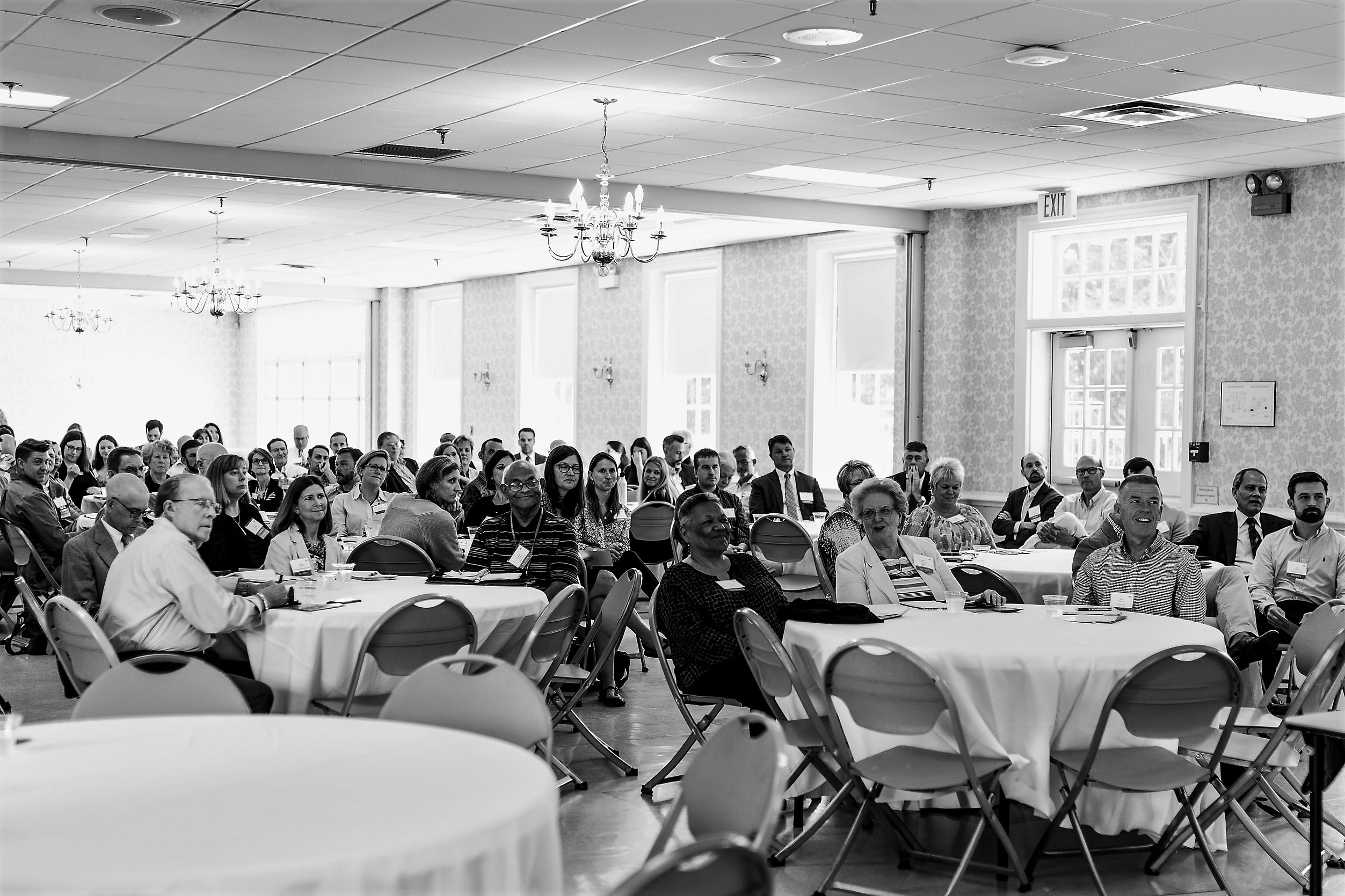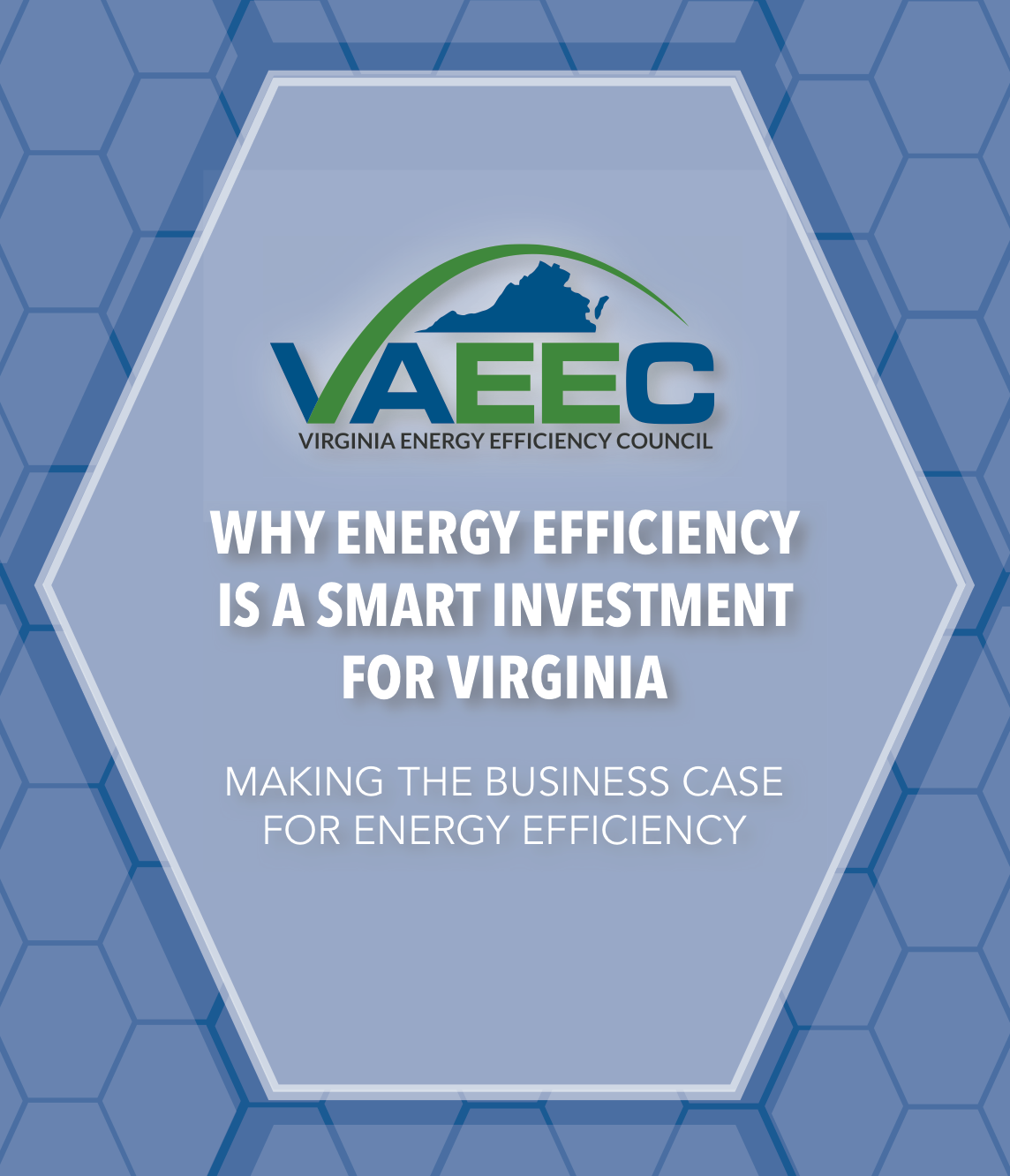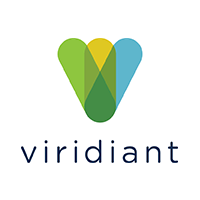 The U.S. Department of Energy (DOE) has been conducting field studies in select states around the country to determine the level of compliance with energy codes in the field. Recently, Viridiant, a VAEEC member, was awarded funding by the Southeast Energy Efficiency Alliance (SEEA) to conduct the study in Virginia.
The U.S. Department of Energy (DOE) has been conducting field studies in select states around the country to determine the level of compliance with energy codes in the field. Recently, Viridiant, a VAEEC member, was awarded funding by the Southeast Energy Efficiency Alliance (SEEA) to conduct the study in Virginia.
This project will look at how well a random sample of builders in 29 jurisdictions around the Commonwealth are implementing different energy related measures of the building code. The success of this project will largely rest on the cooperation of builders and building code officials.
Help spread the word that this study will be underway through the end of 2017, with data collectors visiting over 100 homes that are under construction or recently completed!
Energy efficiency programs are on the Congressional chopping block.
The House of Representatives will vote in the coming days on spending cuts to several of the Department of Energy’s energy efficiency programs such as ENERGY STAR and the Weatherization Assistance Program. The House Appropriations Committee advanced the cuts earlier this month, adding them to the docket for a vote. The cuts, if passed would be applied to fiscal year 2018.
Merged with a larger budget bill, the cuts would slash funding for several Office of Energy Efficiency & Renewable Energy programs by more than half. If passed the office would see funding fall from $2.1 billion to $1.1 billion. The current administration has proposed numerous cuts to energy efficiency programs over the last six months, including eliminating the highly successful ENERGY STAR program. While no programs have specifically been called out for elimination in the House bill, the severe cuts will force the DOE to evaluate spending, which could include the elimination of entire programs.
 While the proposed spending cuts in the House are massive, the Senate Appropriations Committee advanced its Energy and Water Development appropriations bill on July 20, maintaining the current level of funding for energy efficiency programs.
While the proposed spending cuts in the House are massive, the Senate Appropriations Committee advanced its Energy and Water Development appropriations bill on July 20, maintaining the current level of funding for energy efficiency programs.
The House and Senate may disagree on the total amount for energy efficient spending, however both are an improvement from the initial proposals put forth by the current administration earlier this summer which would have gutted federal energy efficiency budgets. While wholesale elimination in FY18 is off the table for now, federal energy efficiency initiatives still face the prospect of unprecedented spending cuts.
It’s unclear whether or not the Senate Energy and Water Development appropriations bill will be voted on before the August break, due to prioritization of the repeal of the Affordable Care Act. Successful energy efficiency programs bring both economic and environmental benefits, producing jobs and savings. Promotion of these programs has historically been bipartisan and their continuation is important for the U.S. to remain competitive in the energy industry.
The agricultural industry consumes massive amounts of energy. In 2015 alone, farmers paid 10 billion dollars collectively in energy bills. Agricultural facilities expend energy in refrigeration and materials handling, pumping and heating, lighting, and fans.
In mid-June, VAEEC hosted a webinar with presenters Josh Ludgate from Energy Exact Inc. and Erin Puryear from Old Dominion Electric Cooperative. In 2012, Old Dominion Electric Cooperative and its nine Virginia distribution electric cooperatives, collaborated with the state energy office, Exact Energy, James Madison University, US Dept of Agriculture Natural Resources Conservation Service, USDA-Rural Development, and Virginia Dept of Agriculture and Consumer Services to develop a plan for offering information, education, and opportunities in energy efficiency for the agricultural sector. During the webinar, Josh and Erin share what this plan has entailed, the challenges and successes, and how they plan to move forward.
 Erin introduced the Energy-saving steps, arranged by cost/benefit improvement pyramid. The base of the pyramid is Energy Analysis:
Erin introduced the Energy-saving steps, arranged by cost/benefit improvement pyramid. The base of the pyramid is Energy Analysis:
- Energy analysis must be made to identify costs and find opportunities where energy use can be reduced. Erin explained that after the energy analysis is made, agricultural facilities can achieve their cost/benefits achievement goals through the following:
- Energy conservation is the most cost beneficial approach an agricultural facility can take. It involves finding behavioral changes that can be implemented to increase energy saving.
- Energy efficient equipment is the next most cost beneficial approach an agricultural facility can take and includes fans, pumps or lights.
- Time of use management is the third most cost effective approach and includes using energy at an off peak hour to save money and electricity.
- Lastly, using Renewable energy, such as solar power, wind power, hydropower, biofuels, is helpful but it is the least cost beneficial.
Erin also discussed funding options, such as grants and loans through the USDA and education and awareness initiatives held in rural Virginia.
After Erin’s presentation, Josh with Exact Energy, reviewed a case study for poultry breeders and growers. Many growers had expressed skepticism to try energy savings technologies because of the perceived risk of high bird mortality. Growers were concerned the new bulbs would confuse the birds and affect yields. Typically, growers use either 100 W incandescent or CFL bulbs or 150 W High Pressure Sodium lamps. In this case study, energy monitoring systems and 23 W compact fluorescent bulbs and LED bulbs were installed in three houses to test several flocks. The lighting electrical consumption dropped by 80% and the average savings of the three houses was $522.99. Growers were overly pleased with the equipment installed, and the case study found that though there is room for advancements, there were no increases or decreases in bird production after implementing the recommendations.
In a state with over 6,000 poultry farms, there is a huge potential to access cost and energy savings for the agricultural sector.
For more information, view the entire presentation or listen to the audio recording.
VAEEC Supports New Efficiency Programs Proposed by Dominion Energy:
This past spring 2017, the State Corporation Commission heard oral arguments in support of energy efficiency programs, which were part of Dominion Energy’s 2016 Demand-Side Management (DSM) filing (Case Number PUE-2016-00111).
As part of this filing, two new energy efficiency programs (Phase VI programs) were proposed to replace Phase II programs, which expired last month:
- Residential Home Energy Assessment Program- bundled a home energy audit with direct install measures such as LED light bulbs, weatherstripping, heat pump tune-ups and adding hot water pipe insulation
- Non-Residential Prescriptive Program- incentive program for non-residential customers who do not qualify for other Dominion energy efficiency programs; includes installing ENERGY Star appliances, HVAC tune-up and commercial duct sealing and testing
The VAEEC formally intervened in support of the proposed programs during the proceedings this past spring. Our members recognize the incredible value that cost-effective energy efficiency programs provide to our local communities and all ratepayers within the utility’s service territory. We also bring a unique perspective to the conversation, representing our members who work in the field implementing these programs. During the two-day hearing, our attorneys with the UVA Environmental and Regulatory Law Clinic argued for the Commission to consider the economic benefits these programs provide to the communities they serve. According to Virginia code, it is unquestionably within the Commission’s discretion to consider these economic development benefits among the “other factors” evaluated, in addition to the cost-effectiveness tests. The Attorney General’s office rendered an opinion on this in their closing statements agreeing with our assessment. Our closing arguments go into further detail, which you can read here.
Unfortunately, earlier this month, the Commission denied the Residential Home Energy Assessment Program and approved the Non-Residential Prescriptive Program at half of the requested budget.
Dominion Energy had also requested a two-year extension for their Residential Heat Pump Upgrade Program through May 2019, which was also denied despite the fact that the utility was not seeking additional funding for this program.
In their ruling, the Commission based their decision entirely on the cost-effectiveness scores of these programs. This ruling was surprising for a number of reasons but especially since both of these programs had previously been approved by the Commission and this was not the recommendation from Commission staff. The staff had concerns about the programs but they did not recommend rejecting them outright.
It was also evident that they did not take into consideration our arguments that the economic benefits these programs create should be considered in addition to the cost-effectiveness tests.
So, what’s next? Right now, the Commission is soliciting feedback on how to establish protocols for Evaluating, Measuring and Verifying (EM&V) energy efficiency programs and the savings associated with them. The Commission decided to establish these much-needed protocols after receiving feedback from a variety of stakeholders last year, including the VAEEC.
As stated in our new report, “Why Energy Efficiency is a Smart Investment for Virginia”:
Establishing EM&V protocols for Virginia utilities will enable them to develop energy efficiency programs with a strong, data-driven foundation from which to expand their offerings to customers. Robust protocols assure that customers receive the benefits that energy-efficiency programs are designed to deliver.
We will continue to keep our members apprised of important regulatory issues as they arise.
Johnson Controls is a big name in energy efficiency and sustainabillity – with more than 120,000 employees serving a range of customers in more than 150 countries. And the company – VAEEC Business Gold member and June’s Featured Member of the Month — is having a big impact across the Commonwealth.
The company creates intelligent buildings, efficient energy solutions, integrated infrastructure and next generation transportation systems that work seamlessly together to deliver on the promise of smart cities and communities. At its core, that promise is about delivering innovation that make people’s lives – and the world – better.
 One area of focus is K-12 schools where Johnson Controls provides the building systems, equipment, technology integration and know-how to create and maintain safe & secure, quality learning environments. Plus they work with clients to identify innovative financing solutions to make these facility improvements with minimum impact on operating budgets.
One area of focus is K-12 schools where Johnson Controls provides the building systems, equipment, technology integration and know-how to create and maintain safe & secure, quality learning environments. Plus they work with clients to identify innovative financing solutions to make these facility improvements with minimum impact on operating budgets.
This doesn’t just make financial sense. Students who are comfortable and happy in their physical environments actually have a better chance of doing well in school. In fact, reports show that students in well-maintained facilities score up to 10 percent higher on standardized tests.
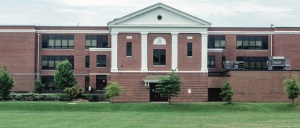 That was the concern in Luray, Virginia, where the Page County Public Schools struggled to provide comfortable classrooms on hot early and late summer days – particularly in many unconditioned second- and third-floor classrooms. Yet installing a new HVAC system had not be possible financially. At least not as a traditional, stand-alone purchase.
That was the concern in Luray, Virginia, where the Page County Public Schools struggled to provide comfortable classrooms on hot early and late summer days – particularly in many unconditioned second- and third-floor classrooms. Yet installing a new HVAC system had not be possible financially. At least not as a traditional, stand-alone purchase.
The local Johnson Controls team developed a plan to fund the improvements through an energy savings performance contract. Under the contract, Johnson Controls guaranteed that, by making a series of upgrades to lighting and building controls across the district, Page County Public Schools would generate enough operational and utility savings to pay for upgrades and offset the cost of air conditioning the un-cooled classrooms.
“The guaranteed savings of an EPC is a great way to fund facility improvements, especially when budgets are tight. In many cases, it’s the only way these kinds of projects can get done.” – Whit Blake, Johnson Controls
 The $7.5M project is guaranteed to save Page County Public Schools $10.2 million over 15 years, and included:
The $7.5M project is guaranteed to save Page County Public Schools $10.2 million over 15 years, and included:
- A full LED lighting retrofit across eight district schools, guaranteed to save the district $193,000 annually
- Metasys® Building Automation Systems installed to control and monitor critical energy systems, saving the district $149,585 annually
- New HVAC systems to condition the air in previously un-cooled classrooms
- Replacement of outdated boiler and rooftop units
In addition to helping Page County Public Schools stretch taxpayer dollars and create more comfortable learning environments, the project itself has created a new learning opportunity.
Through a web-based energy dashboard, students, teachers and Luray residents can access real-time information about the energy use and energy savings across the district, and the environmental impact on their community.
Read the full case study here.
VAEEC members earn points and show support for the Paris Climate Agreement
The American Council for an Energy Efficient Economy (ACEEE) released its annual report evaluating and ranking America’s largest cities for their energy efficiency. The City Energy Efficiency Scorecard is based on policy and program efforts and includes recommendations for improvement. The scores are given for five categories: local government operations, community-wide initiatives, buildings policies, energy and water utilities, and transportation.

ACEEE ranked energy efficiency in America’s largest cities.
Virginia and its localities demonstrate a commitment to leading energy efficiency and climate change policy. In the wake of President Trump’s decision to withdraw the U.S. from the Paris Climate Agreement, Virginia has declared that it will continue efforts to mitigate climate change.
On June 5th, Governor Terry McAuliffe joined the U.S. Climate Alliance, a group of states in solidarity to uphold the goals of the Paris accord.
“As the first state in the Trump era to take executive action to limit carbon emissions and create clean energy jobs, Virginia is proud to join this alliance of states, cities and businesses. President Trump’s announcement to withdraw the United States from the Paris Climate Agreement does not speak for the states and cities that are committed to fighting climate change and paving the way for a new energy economy. If the federal government insists on abdicating leadership on this issue, it will be up to the American people to step forward — and in Virginia, we are doing just that.” –Gov. McAuliffe
In addition to support at the state level, as of June 3, 2017, more than two hundred mayors of U.S. cities have indicated support for the objectives of the alliance. Among them are VAEEC members Alexandria, Richmond, Charlottesville and Arlington County.

Virginia leaders from both the public and private sectors are joining forces to fight climate change and uphold the Paris accord.
These locations, as well as Virginia businesses, Randolph College and the University of Richmond (another VAEEC member), have signed the “We Are Still In” agreement.
Among the 51 cities ranked in the ACEEE scorecard, Richmond and Virginia Beach ranked 28th and 36th respectively. In addition, Richmond was one of three cities to earn a perfect score for municipal energy efficiency-related goals. The Scorecard and rankings act as a marker for progress and encourages cities to further energy efficiency efforts.
Arlington County and Charlottesville were also listed on the Scorecard website as unranked cities. They used the ACEEE criteria to create a self-score equivalent to the Scorecard’s ratings and were highlighted for their efforts and commitment to energy efficiency.
All four of the Virginia locations listed are VAEEC members. In fact, ACEEE awarded points for VAEEC membership. In their view, as an advocate for higher energy standards, membership with the VAEEC reflects a commitment to improving efficiency.
Here’s the breakdown of each city’s ACEEE score.
 Virginia’s capital scored 37.00 out of 100 possible points. Richmond earned high marks in the local government category, outlining numerous policies for energy goals and strategies to reduce usage. One of the more ambitious goals began in 2014 with the RVAgreen Annual Progress Report. A goal was set to reduce the government greenhouse gas emissions by 80% by 2050 using 2008 as a baseline. Though this is a significant reduction rate, the ACEEE says Richmond is on track to achieving its goal. The report centered its recommendations for improvements in the energy and utility category, as well as transportation.
Virginia’s capital scored 37.00 out of 100 possible points. Richmond earned high marks in the local government category, outlining numerous policies for energy goals and strategies to reduce usage. One of the more ambitious goals began in 2014 with the RVAgreen Annual Progress Report. A goal was set to reduce the government greenhouse gas emissions by 80% by 2050 using 2008 as a baseline. Though this is a significant reduction rate, the ACEEE says Richmond is on track to achieving its goal. The report centered its recommendations for improvements in the energy and utility category, as well as transportation.
 Virginia Beach scored 31.50 out of 100 possible points. Scoring similarly to Richmond, Virginia Beach was recognized for its Sustainability Plan which outlines some of the energy-efficiency related policies for its government operations. Virginia Beach also benchmarks 100% of local government buildings in ENERGY STAR Portfolio Manager. In addition, Virginia Beach has several community-wide initiatives, including the adoption of an urban heat island mitigation goal to achieve 45% urban tree canopy cover citywide by 2023. Like Richmond, Virginia Beach’s opportunities for improvement were in energy and utilities, and transportation.
Virginia Beach scored 31.50 out of 100 possible points. Scoring similarly to Richmond, Virginia Beach was recognized for its Sustainability Plan which outlines some of the energy-efficiency related policies for its government operations. Virginia Beach also benchmarks 100% of local government buildings in ENERGY STAR Portfolio Manager. In addition, Virginia Beach has several community-wide initiatives, including the adoption of an urban heat island mitigation goal to achieve 45% urban tree canopy cover citywide by 2023. Like Richmond, Virginia Beach’s opportunities for improvement were in energy and utilities, and transportation.
 Though Arlington was not officially scored, the self-score generated was 64.50 out of 100 points. This places Arlington on par with some of America’s largest, most energy efficient cities. The county has outlined comprehensive strategies to reduce energy consumption and the Arlington Initiative to Rethink Energy oversees the implementation of these policies. Arlington also scores impressively in both building policies and transportation, with a Master Transportation Plan that aims to promote more pedestrian and bicycle transit. Though scoring high in most categories, room to grow can be found most in energy and utilities.
Though Arlington was not officially scored, the self-score generated was 64.50 out of 100 points. This places Arlington on par with some of America’s largest, most energy efficient cities. The county has outlined comprehensive strategies to reduce energy consumption and the Arlington Initiative to Rethink Energy oversees the implementation of these policies. Arlington also scores impressively in both building policies and transportation, with a Master Transportation Plan that aims to promote more pedestrian and bicycle transit. Though scoring high in most categories, room to grow can be found most in energy and utilities.
 Charlottesville also self-scored and earned 49.00 out of 100 points. Of the Virginia locations scored, Charlottesville earned the most points for energy and utilities with a funded partnership with, another VAEEC member, the Local Energy Alliance Program (LEAP) and rebates for water conservation initiatives. Charlottesville also has green building requirements for municipal buildings and works through LEAP to fund the limited time 0% Power Saving Loan Program as part of its initiatives for efficient buildings. Charlottesville’s community-wide initiatives and local government operations are where improvements can be made most.
Charlottesville also self-scored and earned 49.00 out of 100 points. Of the Virginia locations scored, Charlottesville earned the most points for energy and utilities with a funded partnership with, another VAEEC member, the Local Energy Alliance Program (LEAP) and rebates for water conservation initiatives. Charlottesville also has green building requirements for municipal buildings and works through LEAP to fund the limited time 0% Power Saving Loan Program as part of its initiatives for efficient buildings. Charlottesville’s community-wide initiatives and local government operations are where improvements can be made most.
To see the full breakdown of scores for each city visit the ACEEE’s website.
Don’t see your town on the City Scorecard? Click here to try the updated Local Energy Efficiency Self-Scoring Tool, and see how your community stacks up! The Self-Scoring Tool is based off the 2015 City Scorecard.
By Kelley Flint
On May 19th, the VAEEC held their semi-annual member meeting, where speakers and attendees discuss this year’s pertinent theme—Opportunities in the Midst of Change. Over 100+ advocates from diverse backgrounds were in attendance, representing businesses, utilities, nonprofits, national associations, local governments and state agencies. While our current political climate is uncertain, VAEEC’s members and additional advocates made it clear they’re committed to continuing the push for energy efficiency and solutions that move Virginia forward.

The registration table featured the latest VAEEC report.
As an intern for VAEEC and first-time attendee, it was empowering to hear the discussions that took place from people with expertise and experience in this growing field. The presentations, questions posed and answers given were reassurance that even amidst all the unknowns in the environmental and energy sectors, there are people dedicated to making a tangible impact in my home state.
Here’s a brief recap of what was on the agenda.
-Executive Director Chelsea Harnish kicked things off with an introduction to the meeting’s topics and summary of the goals for VAEEC’s future. In addition to discussing the direction of the organization, she laid out five policy recommendations that are part of a newly-released report, “Why Energy Efficiency is a Smart Investment for Virginia”.

Executive Director Chelsea Harnish kicked off the spring meeting.
-Members then took turns sharing their success stories before splitting into groups for our first breakout sessions.
-In one room, Rich Dooley of Arlington County and Paul Brooks of Johnson Controls discussed Property Assessed Clean Energy (PACE) funding. The session focused on the development of PACE in Arlington, and how a local model can be used to fund energy efficient commercial buildings without taxpayer money. Paul Brooks also presented examples of PACE success in renovation projects and how PACE provides a financing solution to funding energy efficiency. The commercial PACE session was moderated by Abby Johnson from Atlantic PACE and Abacus Property Solutions.
-Meanwhile, the residential session took place next door and discussed the importance of Consistent Messaging. The speakers, Andy Farmer of Virginia Energy Sense and Casey Hollins of Rappahannock Electric Cooperative, emphasized outreach in communities and the variety of programs that can jump-start energy efficiency in the public. The residential consistent-messaging session was moderated by Jessica Greene from the Virginia Energy Efficiency Council.
-After lunch, the second round of breakout sessions included a presentation on New Commercial Technologies, led by Kristy Shoemaker of Trane and Greg Merritt of Cree Lighting. The presentation highlighted how rapidly evolving technology has created connections between devices, buildings and people that can be utilized to create more efficient energy use. Lighting technology was highlighted by Greg Merritt as an important advancement that reduces energy consumption by creating awareness of usage as well as reducing energy usage itself through technology changes. The commercial session on new technologies was moderated by John Morrill from Arlington County.

Panelists in the Sunroom discussed ways to address residential energy efficiency.
-At the same time as the commercial panel, Lauren Westmoreland of Southeast Energy Efficiency Alliance spoke about Building Codes. The session discussed how outdated codes prevent buildings from meeting efficient standards. Virginia is also in the middle of creating it’s 2015 building codes, and the juncture could be an opportunity to propel energy efficiency in Virginia. The residential session on building codes was moderated by Andrew Grigsby from the Local Energy Alliance Program.
-The final panel was led by Dan Bresette with the Alliance to Save Energy and Richard Caperton with Oracle. The panel discussed the Federal Implications for Energy Efficiency in Virginia and included an audience Q&A. The panel’s message highlighted that regardless of the direction the federal government takes, and the challenges budget cuts and policy changes may pose, Virginia has the opportunity to move forward with energy efficient solutions and pave the way for other states to follow. The final panel on federal implications in Virginia was moderated by Tom Nicholas from the City of Virginia Beach.
The full agenda can be found on the VAEEC website under Events. If you attended the event, please fill out this brief survey.
A special thanks to all of our event sponsors for making the Spring Meeting possible!
Venue Sponsor

Partners of VAEEC

Friends of VAEEC




Industry Often in the Shadows Drives $1.5B in Revenue and 75,000 Jobs
Richmond, Virginia (May 19, 2017) — Virginia’s economy is stronger thanks to the role of energy efficiency, according to a new report released today by the Virginia Energy Efficiency Council (VAEEC) that finds the industry drives $1.5B in annual revenue and accounts for more than 75,000 jobs. The full report, “Why Energy Efficiency is a Smart Investment for Virginia,” is available at www.vaeec.org/data and was presented at the VAEEC spring meeting in Richmond. The report lays out five specific policy recommendations that will not only help the industry continue to grow but will also play a role in future carbon reduction strategies the Commonwealth may pursue.
“With uncertainty about the future of energy efficiency policies and resources at the federal level, it is more important than ever for states to recognize the enormous potential of energy efficiency to advance smart energy solutions,” said Chelsea Harnish, VAEEC Executive Director. “The VAEEC’s 80+ members prove to us everyday that energy efficiency has tremendous potential to drive economic growth, create jobs, shrink utility bills, conserve natural resources, and reduce pollution. Our report outlines an ambitious plan to tap that potential.”
In 2013, the VAEEC released the first-ever census report documenting the energy efficiency industry in the Commonwealth. Our newest report shows that revenue generated from the energy efficiency sector has grown from nearly $300 million in 2013 to $1.5 billion in 2016. The U.S. Department of Energy has found that the industry is responsible for 75,000 jobs across the state.
The report offers five policy recommendations, specifically addressed to the incoming Governor, deemed “the smartest, fastest, most effective routes we can take to put Virginia on the path toward a clean energy future and stronger economy.” They are:
- Expand utility energy efficiency program opportunities in Virginia
- Support the adoption of Commercial Property Assessed Clean Energy (C-PACE) financing across the Commonwealth
- Adopt rigorous energy building codes for new home construction without weakening amendments
- Expand performance-based contracting for state-owned buildings and public institutions of higher education
- Provide and support opportunities for benchmarking of state, local and commercial buildings
According to the most recent update to the Virginia Energy Plan, each of these policy recommendations are critical for Virginia to meet our energy efficiency goal of 10% electricity savings by 2022. The final report from the Executive Order 57 Working Group, which was released this week as well, also highlights the the important role energy efficiency can play in reducing carbon pollution. Two of the five recommendations made by the Working Group are specific to the energy efficiency industry: 1) Updating state building codes to reflect current technology and standards and 2) Developing an energy efficiency accounting and registry tool.
The report pairs each recommendation with a case study of that policy in action, including:
- Project:HOMES weatherized a veterans housing complex in Richmond through Dominion’s Energy Share program
- The Virginia Center for Housing Research at Virginia Tech found that multi-family apartments that were built to EarthCraft, above building code, standards saved families $650 a year.
- The Virginia Department of Corrections integrated Energy Performance Contracting into their building operations to cut costs
- A Property Assessed Clean Energy (PACE) financed project at a retirement community in neighboring Kentucky is expected to achieve 37% energy savings
- In Arlington County, commercial property owners participated in a voluntary benchmarking program competition, which resulted in millions of dollars in cost savings
“This report should open a dialogue among energy efficiency stakeholders, policymakers, regulators, businesses, and local and state government agencies about how best to augment the implementation of energy efficient technologies and services,” said David Steiner of D+R International and Chair of the VAEEC Board of Directors. “The many benefits to consumers, property owners, ratepayers, local and state governments, and industry warrant aggressive adoption of best practices to implement energy efficiency throughout the Commonwealth, from the kitchen electrical outlet to the power grid.”
Contact: Chelsea Harnish, VAEEC, 804.457.8619
This post originally appeared on the Virginia Multifamily Energy Efficiency Coalition website (May 16, 2017) and is reposted here with permission.
The Board of the Department of Housing and Community Development held a public hearing on Monday, May 15th to hear public comments on the proposed changes to the statewide building code. A large group gathered before the board, including several MFEEC members, to present their comments on the energy efficiency regulation changes that would bring Virginia’s Building Code up to date with the 2015 International Energy Conservation Code (IECC). Those who convened included home builders, energy efficiency advocates, consumer advocates, energy auditors, and HERS raters.
Nearly everyone who convened in support of increased energy efficiency in the building code highlighted the importance of blower door and duct blaster testing, opining that the visual inspection option for duct and building envelope tightness testing should to be done away with. Their message was simple: you cannot, with confidence, visually see an air leak in a building or its duct systems.
Mike Hogan, of Edge Energy commented that of all the homes that he tests, 60 percent fail the blower door test the first time. According to Katie Henderson of Efficient Homes, ducts tested after drywall has been installed fail by a shocking 96 percent, (when they are first tested after construction is complete). Others made the case that testing to make sure leakage standards are met is not only cost-effective for energy usage, but can also guard against costly repairs sometimes needed a few years into the building’s life that can result from moisture problems caused by duct leakage and condensation in walls. On a simpler level, ducts that fail mechanical testing after drywall has already been installed require a great deal of effort to fix.
While highlighting the number of tightness tests that fail on the first time, Benjamin Knopf of Think Little Energy made sure to emphasize to the Board that there are also many builders they work with who routinely achieve building tightness of .5 air changes per hour or less than 1% duct leakage, stressing that these standards are readily achievable with the right training and building practices, a conclusion supported by their handout (05161700) on the results of homes they’ve tested since 2015.
Zack Miller testified on behalf of the MFEEC and the Virginia Housing Alliance sharing data from Virginia Tech’s Center for Housing Research that shows that Low Income Housing Tax Credit affordable apartments in Virginia built to the EarthCraft building standard consumed 40 percent less energy than code built construction and saved the average tenant almost $600 a year in utility costs. He also shared the results of a UNC Center for Community Capital Study that found a 32% lower risk for mortgage default in Energy Star homes to stress the benefits of efficient construction to both renters and homeowners.
A comment brought forward by Casey Murphy of Pearl Certification, was that leaky ducts inside a home can pull contaminants from the attic into the air system, negatively impacting the overall health and safety of the building’s occupants. Protecting the health, safety and welfare of the Commonwealth’s residents is written into the code as many providing testimony emphasized to the Board members.
Dana Wiggins of the Virginia Poverty Law Center, a consumer advocate, said that for low-income households, concerns are always centered around monthly costs for the end-users. For low-income home-owners, or soon to be home-owners, energy costs matter, and consumers need to know if they will be able to afford to maintain the home. High or unpredictable energy costs can put those homeowners at risk for keeping their homes.
Chelsea Harnish, Executive Director of the Virginia Energy Efficiency Council spoke in support of the proposal being considered by the energy sub-workgroup that would drop many of the proposed amendments on mandatory blower door testing, R-49 attic insulation and other measures included in the 2015 IECC and instead adopt an optional compliance pathway for builders to comply with the 2018 Energy Rating Index (ERI) if they choose. Under the proposed compromise, all newly built homes regardless of compliance pathway would be required to pass mandatory duck leakage testing at 4% for ducts outside of conditioned space. This testing could be be certified by the HVAC contractor that installed the system. Chelsea noted in her support for this proposal that 2018 ERI pathway sets the maximum allowable score at 62 instead of 54 as prescribed by the 2015 IECC, which would be more flexible and achievable for homebuilders in the state.
Mike Toalson representing the Homebuilders Association of Virginia spoke about the importance of the industry on Virginia’s economy and argued that the Board should not adopt code changes that could depress homebuilding while speaking for his support of the ERI compromise proposal. Some efficiency advocates mentioned support for the compromise, while many others who testified urged the board to adopt the 2015 IECC in full, without amendments.
A big thanks to our members Chelsea Harnish, Andrew Grigsby, Katie Henderson, Dana Wiggins, and Zack Miller for speaking in favor of increased energy efficiency in Virginia’s uniform state building code!
Written public comment will be accepted by the Department of Housing and Community Development through May 21st here. The new iteration of the code will be adopted by the BHCD sometime this fall and after it is approved by the governor’s office, it will go into effect next year.
Back in the summer of 2016, Governor McAuliffe signed Executive Order 57 (EO57), an initiative to reduce the Commonwealth’s carbon emissions. This Order established a workgroup to recommend concrete steps to reduce carbon emissions from Virginia’s electric power generation facilities, which account for roughly 30% of our total carbon emissions. Earlier this year, the workgroup was soliciting comments from the public on ways to cut Virginia’s carbon emissions from this sector.
The VAEEC supports EO57’s attempt to reduce the Commonwealth’s carbon emissions and has been actively engaged throughout this process. For example, Chelsea Harnish and Board member Andrew Grigsby gave a presentation to the workgroup at a meeting on building codes in January of this year. Currently, the VAEEC is focused on several program areas which reflect our role in advancing innovative and effective strategies in the energy efficiency field: supporting smart energy efficiency policies and programs through the Governor’s Executive Committee on Energy Efficiency, or GEC; Property Assessed Clean Energy financing, or PACE; and pushing for more rigorous energy codes in the Virginia Uniform Statewide Building Code, or USBC.
Thus, it made total sense for us to seize the opportunity to publicly comment on the importance of energy efficiency.
The VAEEC’s comments were carefully crafted to encourage the EO57 workgroup to include energy efficiency as part of the Commonwealth’s compliance plan to reduce carbon pollutions from the electric sector. After all, energy efficiency is one of the most practical, cost-effective tools to reduce our energy consumption and dependency on fossil fuels, which in turn, helps mitigate climate change. Furthermore, energy efficiency is a $1.5B industry in Virginia that supports more than 75,000 jobs. Therefore, we recommended that the EO57 workgroup include energy efficiency as a viable option for reducing carbon pollution from power plants.
Additionally, our comments encouraged the EO57 workgroup, and all Secretariats and state agencies represented by members of the workgroup, to become more actively engaged in the utility proceedings before the State Corporation Commission. These proceedings provide an opportunity to interject different perspectives into these conversations including from those who are charged with protecting consumers from paying higher-than necessary energy bills and agencies tracking our air quality and/or progress toward meeting Virginia’s voluntary energy reduction goal.
Energy efficiency is a practical, cost-effective tool that reduces energy consumption and carbon pollution, saves money on utility bills, creates jobs, and positively contributes to Virginia’s economy. The VAEEC will continue to work hard to advance energy efficiency across the Commonwealth, and we hope that the EO57 workgroup will recognize the value and opportunities energy efficiency offers.
VAEEC’s full comments submitted to the Executive Order 57 workgroup can be found here.
The Richmond Times-Dispatch just ran a story, “Will Virginia forge its own path on carbon regulation,” about the EO57 process which you can read here.
 The U.S. Department of Energy (DOE) has been conducting field studies in select states around the country to determine the level of compliance with energy codes in the field. Recently, Viridiant, a VAEEC member, was awarded funding by the Southeast Energy Efficiency Alliance (SEEA) to conduct the study in Virginia.
The U.S. Department of Energy (DOE) has been conducting field studies in select states around the country to determine the level of compliance with energy codes in the field. Recently, Viridiant, a VAEEC member, was awarded funding by the Southeast Energy Efficiency Alliance (SEEA) to conduct the study in Virginia.


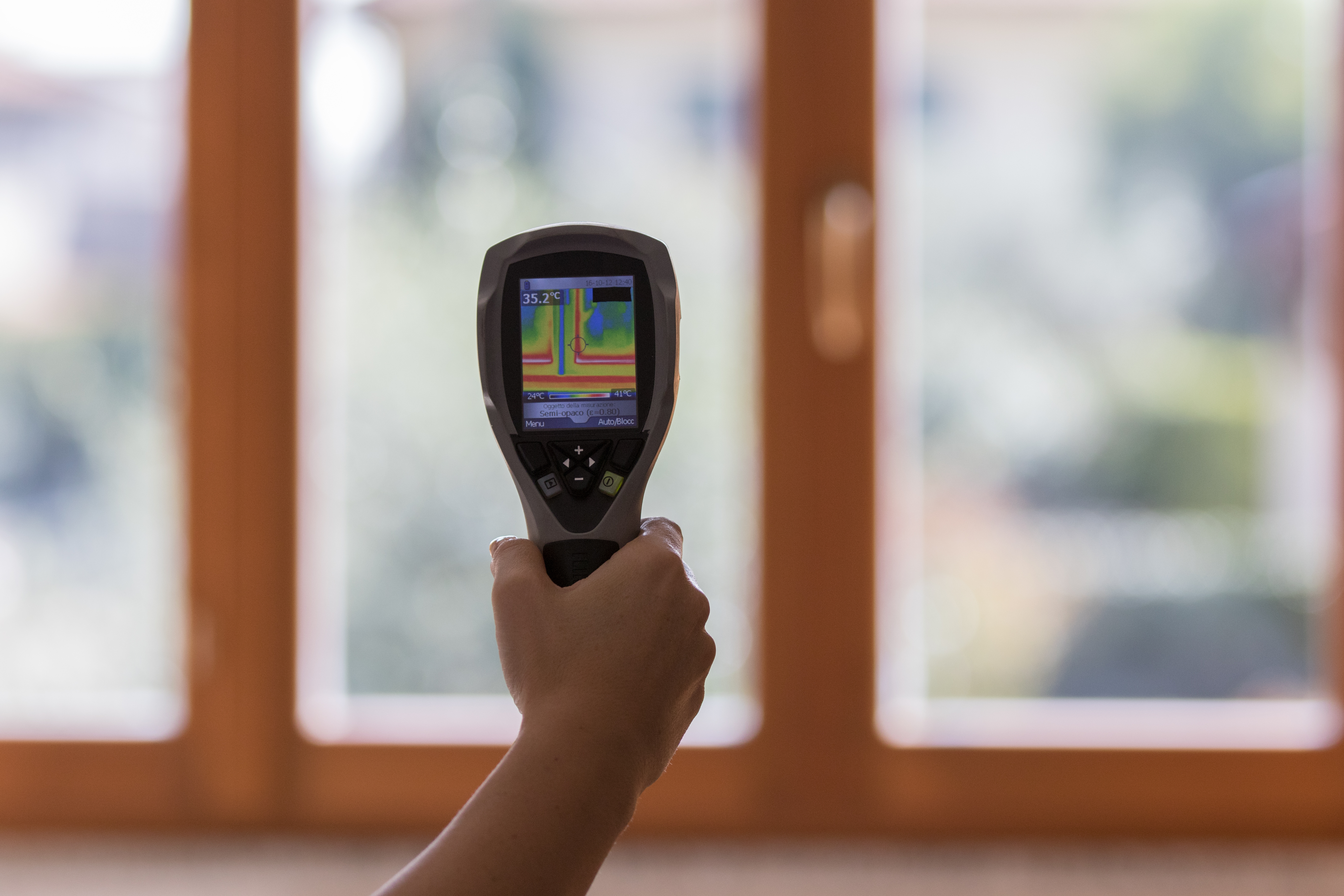
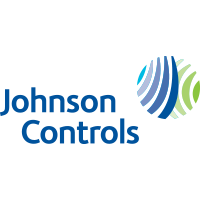



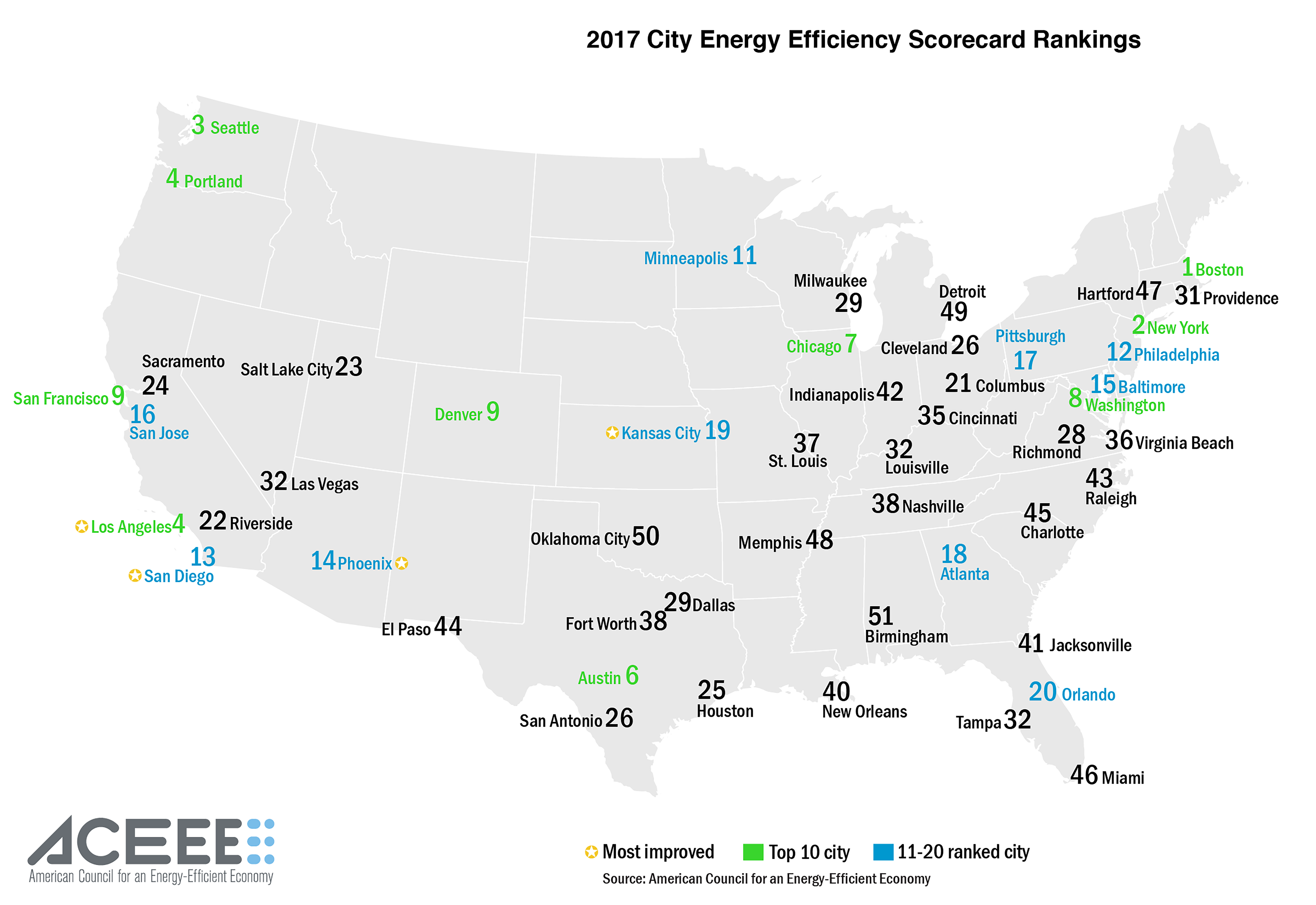




 Charlottesville also self-scored and earned 49.00 out of 100 points. Of the Virginia locations scored, Charlottesville earned the most points for energy and utilities with a funded partnership with, another VAEEC member, the Local Energy Alliance Program (LEAP) and rebates for water conservation initiatives. Charlottesville also has green building requirements for municipal buildings and works through LEAP to fund the limited time 0% Power Saving Loan Program as part of its initiatives for efficient buildings. Charlottesville’s community-wide initiatives and local government operations are where improvements can be made most.
Charlottesville also self-scored and earned 49.00 out of 100 points. Of the Virginia locations scored, Charlottesville earned the most points for energy and utilities with a funded partnership with, another VAEEC member, the Local Energy Alliance Program (LEAP) and rebates for water conservation initiatives. Charlottesville also has green building requirements for municipal buildings and works through LEAP to fund the limited time 0% Power Saving Loan Program as part of its initiatives for efficient buildings. Charlottesville’s community-wide initiatives and local government operations are where improvements can be made most.